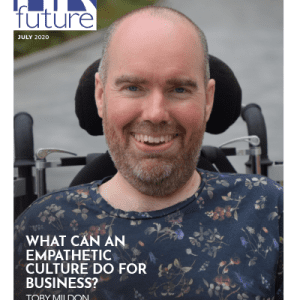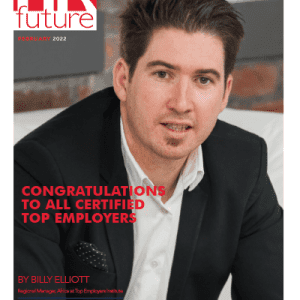There are many forms of unconscious biases in the workplace.
Very few of us will openly admit that they are biased. It feels a little like admitting we are bad humans. Yet, bias shows up for all of us, frequently and often outside of our awareness. Commonly referred to as unconscious bias, these show up as attitudes, preferences and beliefs that influence our behavior subconsciously.
Despite being unaware, unconscious biases have serious implications for hiring, promotions, performance reviews and other career defining decisions and interactions.
So, how do we eliminate or control what we are unaware of? The simple and most obvious answer is to become more aware of the many forms of bias that exist. Educating ourselves allows us to actively work to recognize and overcome these unconscious processes.
Leaders and managers who do not investigate and better manage their biases are often major contributors to an organization’s inability to make sustainable change around diversity, equity, and belonging.
Recognizing where unconscious bias is most problematic (hint, talent decisions) and then putting in intentional processes to educate and eliminate it is one of the first steps companies can take to ensure equitable and inclusive workplace practices. We often discuss the desire for meritocracy but forget that we need to be intentional and conscious to make it real.
The less obvious answer to eliminating and controlling our unconscious biases is to ensure that managers and leaders have the time, space and presence when making decisions about their people. Our unconscious biases are often there for efficiency purposes allowing us to make decisions quickly when we are at capacity and trying to manage stress and urgency.
But as the old adage goes, garbage in = garbage out. If our brains are filled with unconscious messages and beliefs about others, then the decisions that are made will be representative of those. Organizations can build their talent processes and requirements in a way that creates more time and space for real and impactful conversations. Instilling curiosity and insight in talent management is a perfect way to create new thinking and teach us to see diversity in all people.
There are many forms of unconscious biases that occur within the workplace, especially for hiring managers and leaders who are making employment decisions regularly, often with limited time and information. Regardless of the approach we take, familiarizing ourselves with the most common forms of bias can help us identify and control their influence in the future.
Four common biases in organizations
Biases often occur the second we encounter someone or learn any information about them. For example, we might learn that a job candidate went to our alma mater, and unconsciously favour them because of it. We then subtly look for other information that demonstrates they are right for the position and ignore information to the contrary.
This is commonly referred to as confirmation bias, which is the tendency to seek out information that confirms existing beliefs and dismiss information that contradicts them. This can lead to tunnel vision in hiring processes and the inability to consider alternative perspectives from others.
Naturally, we want to surround ourselves with people we see as safe, trustworthy and predictable. Unfortunately, we tend to assume safety and trust exists with people that are most like us, like the alma mater example. When not controlled, this can lead to the biased hiring or promotion of individuals that are more “like us”, also referred to as affinity bias.
When it is not controlled, this can result in the hiring or promotion of people based on affinity instead of qualification or fit. Over time, patterns of affinity bias become evident to employees, leading to resentment and disengagement from employees who see themselves as not “like us”.
Bias can also be influenced by organizational cultures, which shape our perceptions of the “right” way to work. This often presents as conformity bias, where we fit our beliefs or behaviours to align with the majority opinion, even if it doesn’t necessarily reflect how we truly feel or act. This is common in organizations with strong, well-defined cultures and in companies where dissent is discouraged or punished.
While it may be easier to conform to majority group beliefs, it limits creativity and innovation, and it reinforces perfectionism and decreases psychological safety for people who don’t conform. This holds back the growth and development of organizations and employees.
Additional biases experienced in the workplace
Subtle nonverbal biases can impact our impressions of others and guide our beliefs about competence and leadership. Take, for example, beauty, height and physical biases, where we tend to unconsciously prefer and favour people who are more attractive or aesthetically acceptable and even taller. This can lead to favourable treatment based on appearance rather than qualifications or abilities.
In addition, nonverbal biases about personality impacts our perception of leadership abilities. For example, we might make unconscious assumptions about a person’s leadership based on their level of charisma, extraversion, or very specific speaking skills. We often rely on these traits to make judgments due to stereotypes about what makes a good leader, and that definition can even be further biased when aligned with stereotypes we have about gender and/or different ethnic/racial groups.
Unconscious bias can also shape how organizations work and function. This includes everything from what gets recognized, who gets promoted or other opportunities, and even how we define success or build relationships. While unconscious biases can often be subtle and seemingly harmless, they often result in cultures where favoritism thrives, and many employees feel excluded or devalued.
Why dismantling unconscious biases is a marathon not a sprint
Many organizations have spent an extraordinary number of resources deploying unconscious bias training throughout the business. This is also the training that gets the most scrutiny and push back in the media. Does it work? Does it change behavior? Or is this another way to convince organizations to pour money and time into something that has no ROI?
Dismantling unconscious bias will never happen through a 90-minute online program. In fact, the research is very clear that unconscious bias training is incredibly effective when coupled with other programs and a shift in process or policies. For awareness to work, creating a culture of belonging and equity must matter to the organization.
It must live in our conversations about how we work and how we talk about our talent. Leaders must be more intentional about how they build trust and relationships and increase their overall awareness of their impact. This allows what is unconscious to become conscious and for decisions about people to be thoughtful, fair and objective.
The marathon is about creating cultures where people thrive as a long term and critical part of organizational success. Dismantling bias involves implementing training programs, developing leadership capabilities, changing policies and procedures, and ensuring that diverse voices are represented in decision-making processes. While doing so requires time and effort, it will help organizations find the best talent and create a more equitable and inclusive workplace for everyone.
Cristina Jimenez is a Senior Partner and Global Head of Diversity, Inclusion and Belonging at RHR International in the New York Metropolitan area, US. Cristina has been instrumental in the firm’s own cultural transformation.
She has 20 years of industry experience in talent, leadership and as a culture expert, and works to advise leaders on how to scale organizations by building high-performing teams and create cultures where innovation and agility thrive, therefore shaping dynamic, results-driven leaders, and companies












